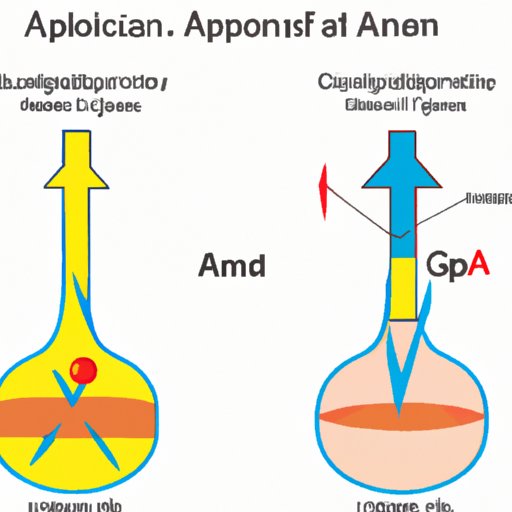
Introduction
When it comes to evaluating acid-base equilibrium in the body, healthcare professionals use various parameters to identify the underlying causes of clinical conditions. One such parameter is the anion gap, which helps identify metabolic acidosis and other underlying conditions related to acid-base status.
The utilization of anion gap measurements is common in clinical settings, and healthcare professionals must know how to calculate anion gap so that they can interpret the results correctly.
Theoretical approach
The anion gap determines the difference between the concentration of cations and anions in the plasma. The theoretical underpinning of the anion gap is based on the principle of electrical neutrality, wherein the sum of cations larger than anions is constant (approximately 12 mEq/l). The anion gap is the difference between the major measured cations and anions in the serum:
Anion Gap = [Na+] – ([Cl-] + [HCO3-])
Practical approach
The procedure for calculating anion gap is relatively simple and follows the above formula. Below is a detailed guide on how to calculate anion gap:
- Determine the serum levels of electrolytes including sodium, chloride, and CO2.
- Calculate the sum of chloride and CO2 levels, then subtract this sum from the serum sodium level.
- The result is the anion gap.
For example, if the serum levels of sodium, chloride, and CO2 are 142 mEq/l, 102 mEq/l, and 24 mEq/l, respectively, the anion gap would be:
Anion Gap = 142 – (102 + 24) = 16 mEq/l
Clinical application
Measuring anion gap is helpful in diagnosing and monitoring several clinical conditions:
- Metabolic acidosis: If the anion gap level is high, it indicates metabolic acidosis, a condition characterized by a decrease in blood pH resulting from an increase in the production or presence of metabolic acids or a decrease in bicarbonate concentration.
- Renal Failure: Elevated levels of anion gap may signify renal diseases, such as acute renal failure or chronic kidney disease, which can affect electrolyte balance.
- Poisoning: Increased anion gap levels may signify certain kinds of poisoning, such as methanol, ethylene glycol, or aspirin poisoning.
Interpreting the anion gap level alone is not diagnostic. However, it provides a basic indication of the presence of a metabolic acidosis or other related conditions, depending on the clinical context.
Comparison with other methods
Although the anion gap is an essential parameter in evaluating acid-base equilibrium in the body, some physicians have started to compare it to other methods. Other methods include evaluating the strong ion difference (SID) or applying the Stewart approach to acid-base equilibrium.
The SID is useful when measuring acid-base balance in critically ill patients, in whom dilutional acidosis can lead to an elevated anion gap. In contrast, the Stewart approach is based on fundamental principles of physical chemistry and offers a more comprehensive analysis of acid-base imbalance than the anion gap.
While advanced methods have their advantages, they require costly equipment and specialized skills. For most clinical applications, the anion gap offers an economical, conventional, and widely accepted method for evaluating acid-base balance.
Importance of Monitoring Anion Gap
Monitoring anion gap levels is crucial in the clinical setting, especially in critical patients. In many situations, healthcare professionals can identify trends in electrolyte imbalance by monitoring the anion gap over time. This parameter is useful in making treatment decisions, identifying the underlying conditions, and monitoring the response to therapy.
Common misconceptions
Some physicians and healthcare professionals tend to misunderstand or misinterpret anion gap measurements, leading to wrong diagnoses or inappropriate therapeutic decisions. The most common misconceptions regarding anion gap measurements include:
- Assuming that high anion gap automatically indicates metabolic acidosis. High anion gap can also imply other conditions, as discussed in the previous section.
- Assuming that low anion gap readings are necessarily normal values. Low anion gap can indicate various conditions, but it is commonly seen during laboratory errors. Therefore, repeating measurements are essential.
- Assuming that an acute or chronic disease needs confirmation by a single measurement. Like all other laboratory parameters, anion gap readings need to be monitored over a period to identify trends and assess their significance.
To avoid these misconceptions, healthcare providers should follow appropriate interpretation guidelines and avoid inappropriate shortcuts. They should review the data and sources of error before making critical decisions.
Conclusion
The anion gap is a basic, conventional, and widely accepted method for evaluating acid-base balance in the clinical setting. Physicians and healthcare professionals must learn how to calculate anion gap and interpret the results correctly to use this tool in diagnosing and monitoring various clinical conditions. Additionally, they should be aware of its limitations, as well as its advantages, to avoid common misconceptions and make informed decisions for their patients.
By following appropriate guidelines and paying close attention to the clinical context, physicians and healthcare professionals can use anion gap measurements to make informed decisions about their patients’ health and well-being.




